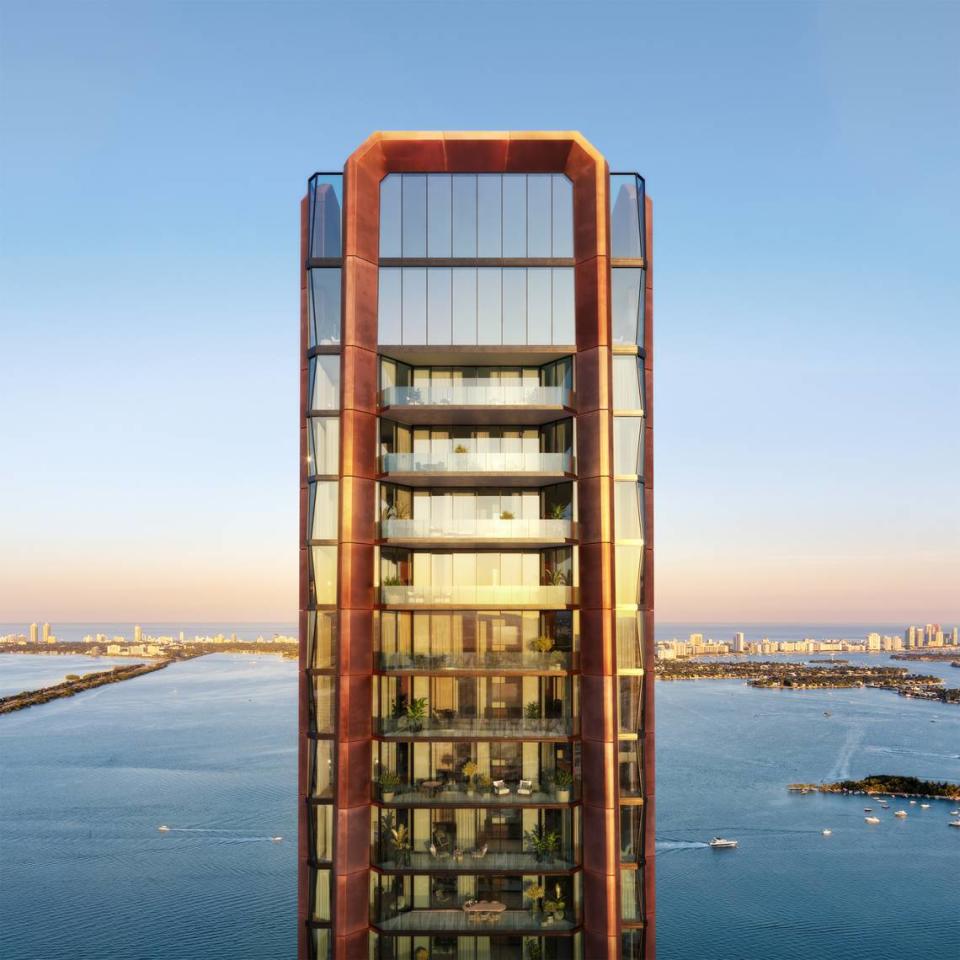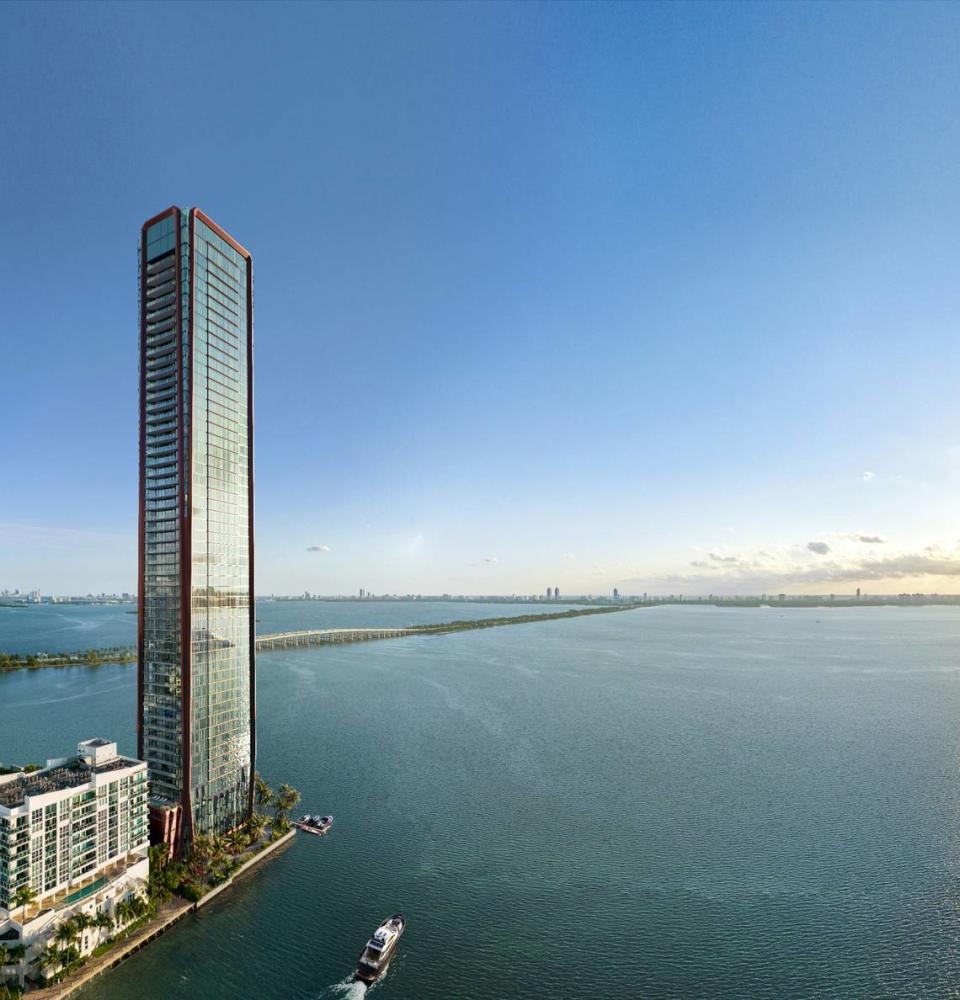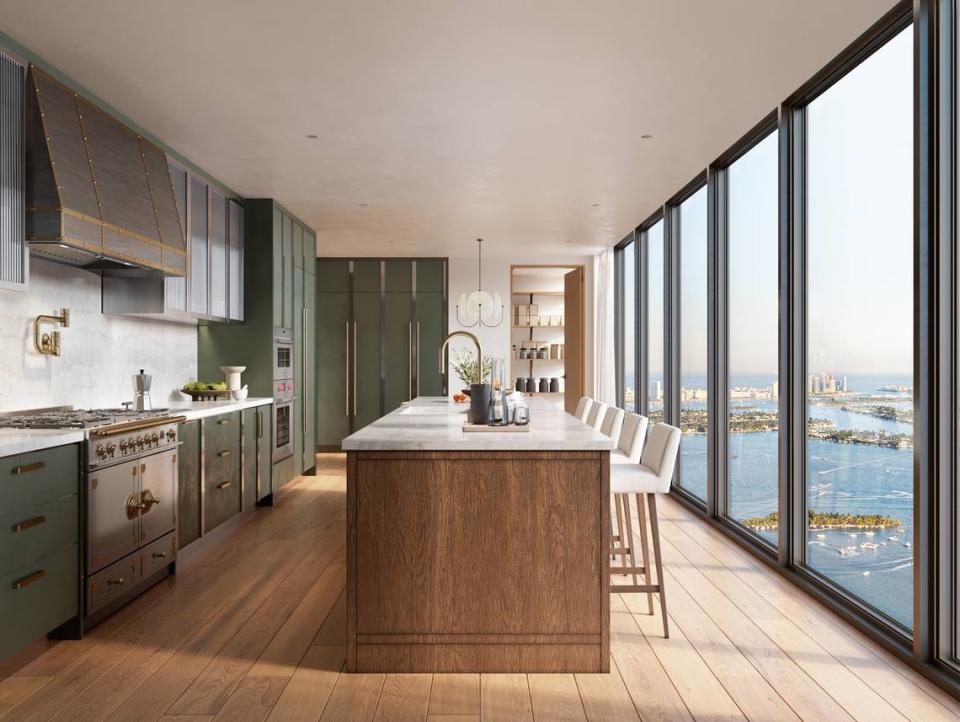Restaurant group, developer make rare pairing to build $500 million Miami condo tower
How much would you pay to be fed 24/7 by the owners of noted Italian restaurant Carbone? In an era of condo branding and star architects, two real estate developers are betting well-heeled buyers will spend millions to live in an environment curated by New York-based restaurateur Major Food Group.
Terra and One Thousand Group — the firm behind the Zaha Hadid-designed One Thousand Museum in downtown Miami — have made the rare move of having a dining partner in their $500 million, 58-story condominium development The Villa in Miami’s Edgewater neighborhood.
It’s only the second residential building project in Miami with a restaurant enterprise as a development partner. Major Food Group and its 43 restaurants in South Florida and around the world bring name recognition that should help draw wealthy condo buyers to the waterfront high-rise, said Louis Birdman, co-founder of One Thousand Group.
News of the unusual pairing is another step forward for this project already two years in the pipeline. The developers first assembled nearly an acre of adjacent properties in up-and-coming Edgewater, spending about $30 million to acquire and raze boutique condo buildings there. Then they submitted and secured approvals from the city for the new residential tower. One Thousand Group and Terra will file for building permits by May. Construction is expected to start by December and finish by late 2026.
The Villa will rise at 710 NE 29th St. The skyscraper will have 60 residences, divided between 3,000-square-foot layouts listed for $4.5 million and 6,000-square-foot full floors listed at $8.5 million. Amenities include a 20,000-square-foot restaurant run by Major Food Group, spa, gym, pool, rooftop helicopter pad and boat dock. A new parking garage also will be built across from the tower.
Hollywood-based ODP Architects designed the tower, including its copper-colored, metal-panel finish. The firm plans a coastal, Italian-inspired interior design. The architect is a familiar favorite of One Thousand Group, having worked with Zaha Hadid on her One Thousand Museum.

“As developers, we’re always looking for an innovative way to establish a brand for a project. If you’ve looked at the past 15 years, some developers have done partnerships with car brands, hotel brands, fashion brands. We wanted this to be all about lifestyle,” Birdman said. “The idea was to do a different type of hospitality brand. The Major Food Group guys, we thought, would be a great fit to create this luxury lifestyle.”
Major Food Group has yet to finalize a name or theme for its two-story restaurant that will be part of the condo tower, said Jeff Zalaznick, co-owner of the firm. The eatery will be open to Villa condo owners and the public, but owners will have the extra benefit of ordering from special menus designed for eating by the pool or spa and to stock their home fridges.
“We’re bullish on the future of Miami,” Zalaznick said. “The increased migration (from across the country) is just a product of the city becoming better.”
Birdman and Zalaznick declined to comment on the financial terms of the partnership agreement between the developers and restaurant company.

Major Food Group manages 43 restaurants, including in the Miami area, Boca Raton, New York, Boston, Dallas, Paris, Hong Kong and Riyadh, Saudi Arabia. In January 2021, it opened one of its flagship Carbone restaurants in Miami Beach. Since then, it opened six other restaurants throughout South Florida, including Contessa in the Design District. Zalaznick said more is to come in Miami with pending partnerships with more residential buildings, hotels and two other eateries.
While the condo developer-restaurateur team might seem odd for a branding theme, Fortune International Group led the way in Miami with its Brickell tower. It announced in December 2022 it would partner with Casa Tua for its condominium Ora by Casa Tua.

Developers started branding condos in South Florida in the early 2000s. Former President and real estate tycoon Donald Trump started the trend here with his projects in Sunny Isles Beach. Since then, many residential projects have been branded by luxury cars, fashion houses, hotel chains and cabarets.
Real estate expert Peter Zalewski said it’s a gamble to partner with a restaurant.
“What is the legacy of a restaurant? Is it something that can remain for generations? As an investor, you have to think if this can last and whether it will be detrimental,” said Zalewski, principal of Condo Vultures, a Miami real estate brokerage. “A restaurant is like a nightclub. It could be popular one year and another it isn’t.”

A bigger test will be waiting to see whether condo buyers drop millions to live in a new flashy tower in Edgewater, whose allure has been its proximity to surrounding neighborhoods as opposed to the area itself. It’s a stone’s throw from the Design District, Midtown Miami, Wynwood, Arts & Entertainment District, downtown Miami and Miami Beach. Over the past few years, Edgewater has gained popularity among buyers and renters.
Long-term neighborhood residents like Yuval Ofir blame poor urban planning and Miami officials for bumper-to-bumper traffic, crime, dilapidated roads and few, budget-friendly services. The 35-year-old Ofir, founder and president of creative agency and lifestyle brand Yo Miami, has lived in the area since 2009.
The native Miamian said the flurry of new developments and wealthy newcomers have led to few, if any, benefits for longtime residents. Many like him are looking to move out in a few years, leaving behind a changing landscape to be molded by the area’s next influx of affluent renters and owners.


